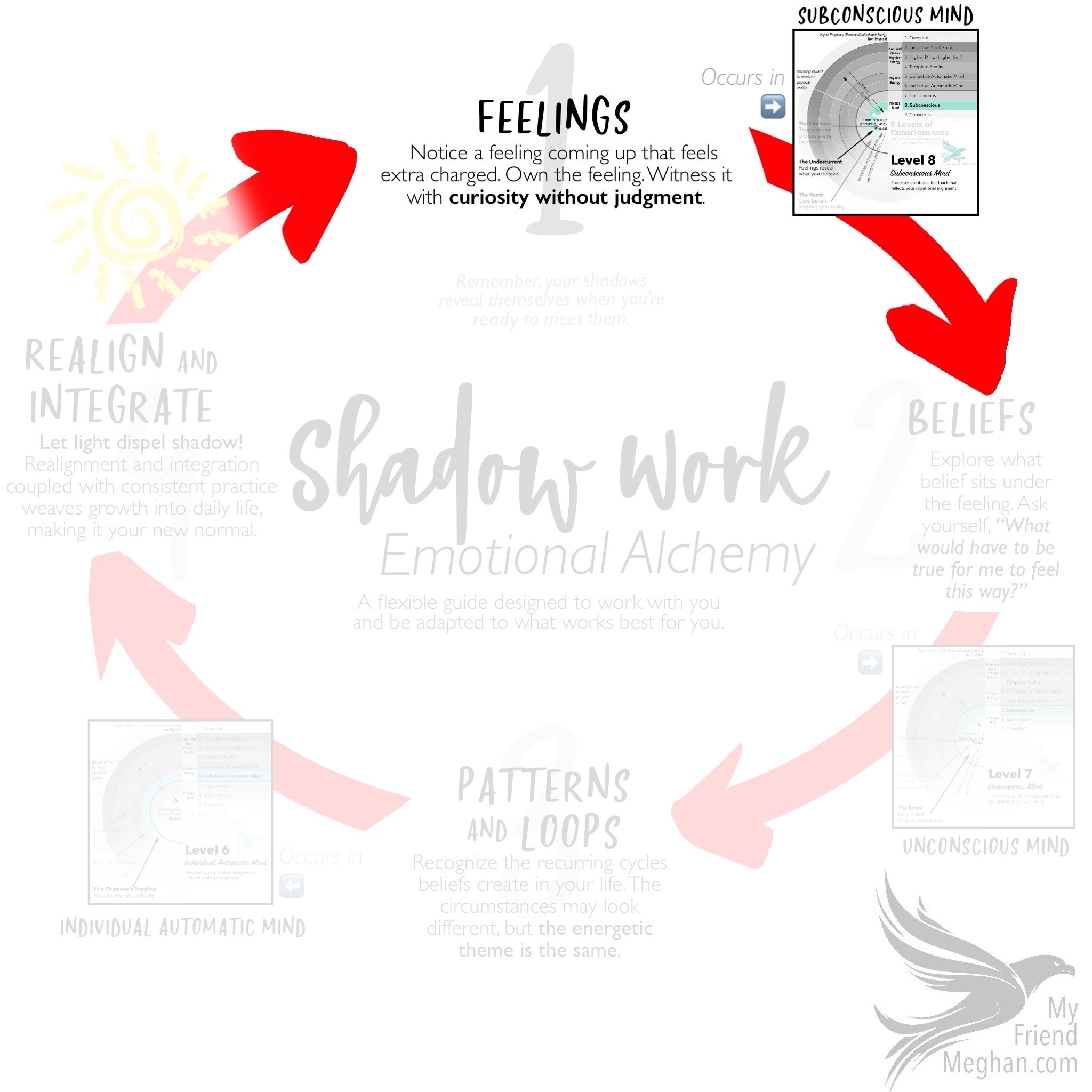Shadow work is the practice of exploring and integrating the parts of ourselves that often remain hidden—our subconscious patterns, unresolved emotions, and suppressed experiences. One of the most accessible entry points into this work is learning to recognize and work with our feelings.
Emotions serve as indicators of the energy we’re carrying, often pointing to places where healing, release, or transformation is needed. By engaging with them consciously, we open the door to greater self-awareness and the ability to intentionally shift our inner state.
Why Feelings Matter in Shadow Work
Feelings arise at the Subconscious level—what we might call Level 8 on the 9 Levels of Consciousness. At this level, we’re not yet in the space of deliberate (conscious) thought; instead, we’re responding from stored experiences, past conditioning, and ingrained energetic patterns. This is why feelings can sometimes seem to appear “out of nowhere,” yet they are deeply rooted in our inner landscape.
When emotions surface, they bring to light the hidden energy driving them. This moment of awareness is an opportunity: we can choose to leave these emotions unexamined, allowing them to reinforce old patterns, or we can engage with them intentionally. In shadow work, that choice becomes central—working with our feelings allows us to transmute what’s holding us back into energy that supports our growth.
The Role of Polarity
Polarity refers to the direction of our energetic charge—whether we are aligned with a positive, expansive, unhindered state or a negative, constricted one. When we feel triggered, we’re typically becoming aware of negatively charged emotions that have been activated by a present situation. Left unaddressed, these emotions can keep us anchored in constricted energy.
However, if we desire to align with a positive polarity, working with these feelings becomes essential. The act of transmuting them—shifting their energy from a constricted to an unhindered state—frees us to operate from a place of strength and possibility. This isn’t about denying or bypassing the feeling; it’s about acknowledging it fully, understanding its roots, and moving toward a more life-giving state.
Recognizing Elevated Thought in the Process
Within the Elevated Thought framework, feelings can be seen as indicators of our current flow—whether it’s constricted, hindered, or unhindered. Constricted flow often feels heavy, turbulent, or stuck, while hindered flow has some movement but requires force, and unhindered flow feels light, open, and aligned.
When feelings arise, they serve as an early signal of which state we’re in. If we notice constricted or hindered flow, shadow work offers a way to address the underlying energy rather than just the surface-level discomfort. By consciously engaging with our feelings, we create the potential to shift into unhindered flow, where we are more open to synchronicity, insight, and alignment.
Turning Awareness into Transformation
The power of working with feelings lies in what we choose to do once we notice them. Awareness alone is not enough—it’s the conscious response that creates change. This might mean sitting with a feeling until it softens, using breathwork or movement to shift the energy, or exploring the memory or belief that sparked it (and we’ll move into working with beliefs next).
Each time we choose to work with our emotions rather than react from them, we strengthen our ability to live with intentionality. This process builds resilience, increases self-trust, and fosters a deeper sense of alignment with our true self.
Actionable Insights
- Notice the feeling before the story. When a strong emotion arises, pause before assigning it a narrative. What physical sensations, images, or impulses do you notice?
- Name the flow state. Ask yourself if your current state feels constricted, hindered, or unhindered. Let this guide your next step in shifting energy.
- Choose your polarity intentionally. If the feeling carries a negative charge, decide how you want to move toward a positive, expansive state.
- Work with the energy, not against it. Whether through journaling, breathwork, or mindful movement, engage with the feeling in a way that allows it to shift naturally.


Leave a Reply